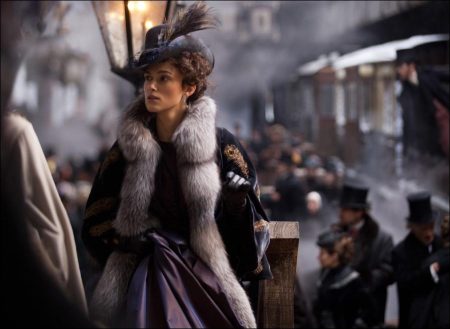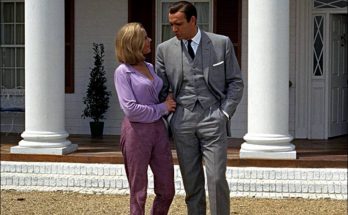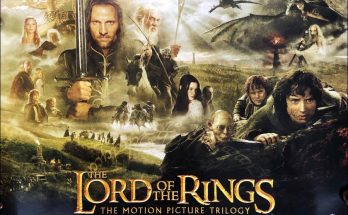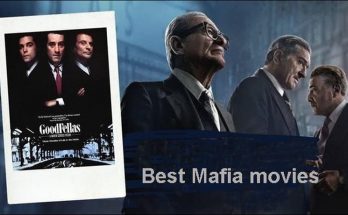The time is 1874. Vibrant and beautiful, Anna Karenina (Ms. Knightley) has what any of her contemporaries would aspire to; she is the wife of Karenin (Jude Law), a high-ranking government official to whom she has borne a son, and her social standing in St. Petersburg could scarcely be higher. She journeys to Moscow after a letter from her philandering brother Oblonsky (Matthew Macfadyen) arrives, asking for Anna to come and help save his marriage to Dolly (Kelly Macdonald).
En route, Anna makes the acquaintance of Countess Vronsky (Olivia Williams), who is then met at the train station by her son, the dashing cavalry officer Vronsky (Aaron Taylor-Johnson). When Anna is introduced to Vronsky, there is a mutual spark of instant attraction that cannot – and will not – be ignored.
The Moscow household is also visited by Oblonsky’s best friend Levin (Domhnall Gleeson), an overly sensitive and compassionate landowner. Levin is in love with Dolly’s younger sister Kitty (Alicia Vikander). Inopportunely, he proposes to Kitty but she is infatuated with Vronsky. Devastated, Levin returns to his Pokrovskoe estate and throws himself into farm work. Kitty herself is heartbroken when, at a grand ball, Vronsky only has eyes for Anna and the married woman reciprocates the younger man’s interest.
Anna struggles to regain her equilibrium by rushing home to St. Petersburg, where Vronsky follows her. She attempts to resume her familial routine, but is consumed by thoughts of Vronsky. A passionate affair ensues, which scandalizes St. Petersburg society. Karenin is placed in an untenable position and is forced to give his wife an ultimatum. In attempting to attain happiness, the decisions Anna makes pierce the veneer of an image-obsessed society, reverberating with romantic and tragic consequences that dramatically change her and the lives of all around her.
Learning to Love in Moscow
The enduring power of Leo Tolstoy’s novel Anna Karenina is summed up by Anna Karenina director Joe Wright: “Everybody is trying in some way to learn to love.”
Keira Knightley, who stars in Wright’s boldly theatrical new movie as Anna, comments, “The story is one we understand today because people still want something they cannot have, still come up against social blocks and rules, and still have trouble communicating emotions to each other.”
Wright reflects, “When I read the book, it spoke directly to the place that I found myself at in life. You hope you are like one of the characters, and you realize that you have been like another of the characters. They are all perfectly true, and terrifyingly close.”
It was Wright who approached his longtime collaborators Tim Bevan and Eric Fellner, producers and co-chairmen of Working Title Films, about the potential of taking Anna Karenina to the big screen with their frequent leading lady Knightley starring.
“This was a huge novel, a great big love story that had been adapted before. We knew we needed to have a screenwriter who would bring something to the party,” remarks Bevan. Academy Award winning screenwriter and playwright Tom Stoppard was the only writer Wright had in mind to adapt the classic book.
Stoppard admits, “I was really keen to do it. It’s true that I think of myself principally as someone who writes for the theatre. But I don’t manage to come up with a full-length play all that often. While I enjoy doing film work of different kinds in-between, not every overture is as promising as Joe Wright directing a film of one of the great novels.”
Bevan notes, “Tom read the book and looked at previous miniseries and film versions – including one in Russian. Anna Karenina is a rich tapestry containing many different themes and philosophies on the complexities of class, politics, moral behavior, and love – across hundreds of pages. There are interweaving, and interrelated, narratives and characters.
“We noticed that the previous adaptations had focused primarily on Anna, even though the novel is not only her story but also the parallel story of Levin, and realized that his progress enhances a very strong narrative.”
Producer Paul Webster says, “Two arcs – Anna’s and Levin’s – meet in the middle of their trajectories across the human heart. One is tragic, and the other is uplifting.”
Bevan adds, “Ian McEwan, the author of Atonement, said to me that he felt Levin-with-Kitty is the greatest love story in literature. Levin’s story was slightly autobiographical for Tolstoy.”
Wright says, “Tolstoy wrote the novel to be accessible in terms of its emotions. His analysis of motivation and character is so extraordinary, so acute. In our conversations, Tom and I realized that we both felt the same way about the characters.”
With Stoppard, Wright explored every avenue of the story over many hours, stating that “this was an amazing opportunity to learn from a master. For me, every film is an education. Certainly Tom was well-versed in Russian history and culture and identity. We felt that we could get more to the heart of Anna, Levin, and all the characters by contemplating love among Imperial Russian society in the 1870s. I was also thinking about the movies in which Robert Altman masterfully interweaved intimate stories. The narrative threads we chose work as a kind of double helix, winding around each other in a multi-stranded portrait of a community; for example, Oblonsky is a catalyst in both threads, as he is Anna’s brother in need of help and Levin’s friend trying to help.”
Bevan adds, “As Eric and I know from making movie adaptations of a number of books over the years, the length and breadth of a novel cannot be transferred in its entirety for the duration of a feature film.
“But at around 130 pages, Tom’s screenplay beautifully captures the essence of the novel without compromising character or story, by illuminating that main theme which runs throughout the novel: love, in all its forms.”
Stoppard elaborates, “There is love, mother love, baby love, sibling love, carnal love, love of Russia, and so forth. The word ‘love’ is central to the book, and to our movie. I decided not to work on including those parts of the novel that might be about something else. We are honoring the scope of the book.”
Bevan realized that what was taking shape was “something big for the audience to delve into. They can disappear into a world of emotion and character, which I believe makes for great cinema.” Two-time Academy Award nominee Jude Law, who plays the crucial role of Anna’s husband, Alexei Karenin, read the script and found it “remarkable. I read it before I’d even tackled the book, and in its own right it is so rich. In this adaptation, you never feel that one character was being isolated as a device; each character seemed very precisely drawn.
“The piece looks at different angles of love and relationships, honestly and openly and without judgement. There is such an elegance to the way Tom writes dialogue. It’s masterful screenwriting; going from that to reading the novel itself, I realized just how hard that must have been to do.”
Webster remarks, “People in this story fall in and out of love, and in order to feel moved by something you’ve also got to feel enlightened by it; there is a great deal of wit in Tom’s adaptation, which helps to illustrate the story’s points.”
Stoppard notes, “Tolstoy’s book packs a hell of a wallop. It was daunting going in, but I so enjoyed the work.”
By the spring of 2011, the script was ready and location scouting was taking place across Russia and the U.K. Bevan remembers, “Going to the Tolstoy house near Moscow, after taking the night train there from St. Petersburg in the middle of winter was a fantastic trip that gave everyone a sense of Anna’s own journey.”
Yet Wright still found himself wanting to take his version of Anna Karenina in a new direction, rather than following in the footsteps of previous adaptations by filming at established Russian locations – or retracing his own footsteps in stately homes across the U.K. where he had previously filmed. So it was that, some two months before the commencement of principal photography, the director made a bold decision to take a more theatrical approach in making an epic love story.
Webster says, “Joe never wants to make ‘another period movie,’ so when he made the decision to theatricalize Anna Karenina we were guaranteeing audiences a different take on this story than any other version they might have seen – and, an accessible one.”
Recalling that two of his previous films were also not “another period movie,” Wright reflects, “I like exploring the form and being expressive. One of the things I enjoyed about making Pride & Prejudice and Atonement was that each of those films had a large portion shot in one location – which in fact engendered a lot of creative freedom. I thought, if I could set Anna Karenina largely in one place, then what and where would it be?
“What came to me was a passage in [British historian] Orlando Figes’ [2002 book] Natasha’s Dance: A Cultural History of Russia where he’s describing St. Petersburg high society as people living their lives as if upon a stage. Figes’ thesis is that Russia has always suffered from an identity crisis, not quite knowing whether it’s part of the East or part of the West. During the period Anna Karenina was written in and about, Russians decided they were definitely part of Western Europe and that they wanted to be cultured like the French.”
Stoppard notes, “Here was a society that tried to be the equal of Paris in opera, literature, and all the arts.”
Wright elaborates, “They dressed as French people and they read books on the etiquette of how to behave like a French person. Their ballrooms were often mirrored so that they could watch themselves and appreciate their own ‘performances’ as French people, and they were advised to keep one side of the mind French and one side Russian. The Russian side was always observing and checking the French side to make sure that you were behaving, or ‘performing,’ correctly. Their whole existence became a performance with imported ideas of decorum, manners, and culture.”
Knightley offers, “You had these people – a whole society – who were pretending to be something they weren’t, all the time. Wright adds, “Anna plays the role of being a dutiful wife up until the point where she meets Count Vronsky, but everyone else in her circle is always acting. So I realized, ‘Okay, we could situate this film in a theatre.'”
From there, the concept crystallized; to present St. Petersburg and Moscow’s rarefied circles of the 1870s in all their theatricality, Wright decided that “the action would be taking place within a beautiful decaying theatre, which in itself would be omnipresent, a metaphor for Russian society of the time as it rotted from the inside. Yet we would also adhere to Tom’s adaptation, with the story taking place oblivious to the artifice surrounding it.
“The producers had amazing faith in me, but the person I was most scared of telling about this was Tom because he’d written this script which was brilliant and perfect and set in the way he’d envisaged the film. At first he was nervous, but then he came ’round. I took his text and transposed it from real locations to the stylized location; every single event and word in his adaptation was shot.”
Stoppard remembers, “Joe told me he didn’t want to alter the script – aside from the scene, or stage, directions – but at first I didn’t know what I thought. He then came to see me with this scrapbook which contained the film as he now saw it. Seeing it, I put my money on him to pull this off.”
Bevan comments, “We’ve all made movies that are ‘period films.’ But we make them because we are compelled by the characters, and by their world that can be created for a movie that an audience can explore. Our excitement hopefully translates to the screen.
“So a new approach to the telling, both in terms of Joe’s aesthetic and Tom’s adaptation, became this movie’s raison d’être. With it, we follow Levin journeying into the real world, but Anna’s odyssey is contained within the theatre.”
“Contained,” and yet visually expansive; the immense 1870s Russian theatre location was to come to life and transform before the eyes of the audience. Webster assesses the effect as “magical. You’re going through doors into snowy landscapes, into mazes. The theatre space hosts an ice rink, a ball, an opera, a massive society soirée, and a horse race. This is a vast, sprawling movie.
“Everything springs from Joe’s imagination; he has always been interested in crossing boundaries among theatre and film and theatrical presentation, always looking at finding new ways to explore them visually. Aesthetically, Anna Karenina is a leap forward for him.”
Wright reflects, “It was also a way to better express the essence of the narrative, and to get to the essence of the scenes; I would be treating Tom’s script in the way a theatre director would a play’s text.
“The heart of the story is the human heart. I am forever fascinated by why and how love works, and how sincere we are as human beings with our emotions.”
Anna Karenina
Directed by: Joe Wright
Starring: Keira Knightley, Aaron Johnson, Jude Law, Matthew Macfadyen, Kelly Macdonald, Emily Watson
Screenplay by: Tom Stoppard
Production Design by: Sarah Greenwood
Cinematography by: Seamus McGarvey
Film Editing by: Melanie Oliver
Costume Design by: Jacqueline Durran
Set Decoration by: Katie Spencer
Music by: Dario Marianelli
MPAA Rating: R for some sexuality and violence.
Studio: Focus Features
Release Date: November 16, 2012
Related Link: View the Full Production Notes for Anna Karenina
Views: 135



